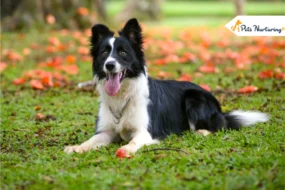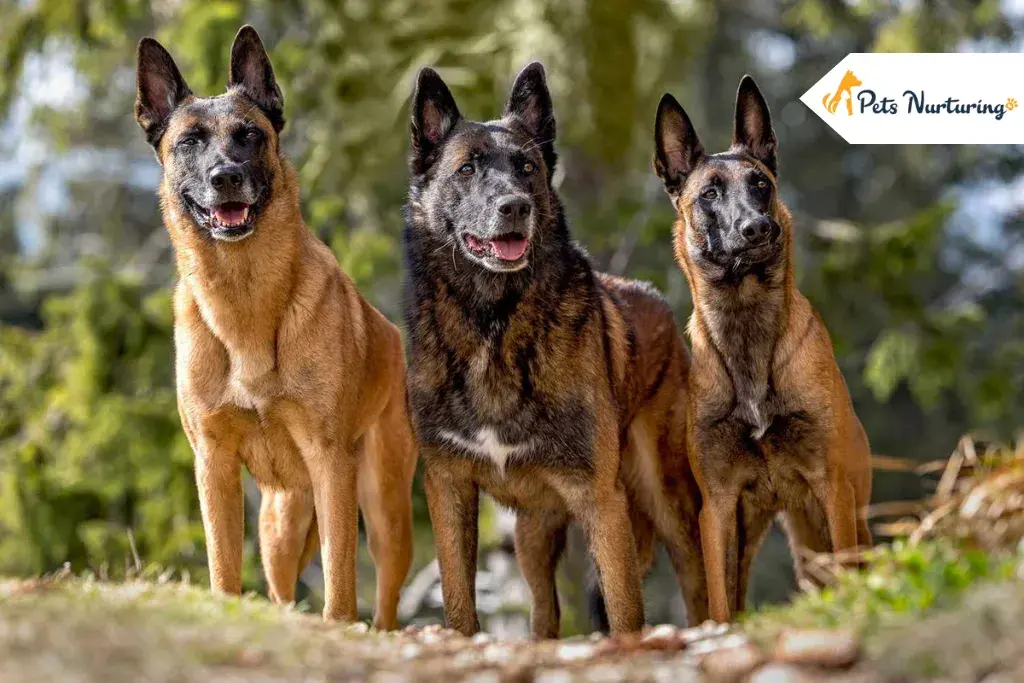
Belgian Malinois (pronounced “mal-in-wa”) is a dog breed that has become popular in recent years. With their loyal and friendly nature and calm personality, these medium-sized dogs get along with anyone! These canines are highly intelligent and athletic. This is why they’re considered great family pets and faithful companions for humans.
If you’re planning to get a puppy and are considering a Belgian Malinois but need some clarification, we’re here to help you! Today, in this breed guide, I will share all the vital information about the Belgian Malinois. From its origin and appearance to its grooming and health problems, I’ve tried to cover every detail possible. I’ve also included the cost and coat color available so that it will be easy for you to make the final decision.
Let’s start with an overview of Belgian Malinois.
Overview
- Belgian Malinois is a highly active dog breed with a loyal nature and strong herding instincts.
- Due to these things, they have always been included in police work, military service, and search and rescue.
- There are many similarities between the Belgian Malinois and German Shepherd dog breeds.
- Even though these canines are protective and physically strong, they are affectionate and loveable.
- Within a short period, they usually develop a strong bond with their hoomans.
Belgian Malinois Dog Breed Overview
Breed Name / Group: Belgian Malinois / Herding
Origin: Belgium
Height: 24-26 inches tall (Male) and 22-24 inches tall (Female)
Weight: 55-75 pounds (Male) and 40-60 pounds (Female)
Lifespan: 12-14 years
Coat: Short, double coat
Coat Colors: Fawn, mahogany, red sable, black, and fawn sable with a black mask
Temperament: Intelligent, energetic, protective, and trainable
Needs for Grooming: Moderate
Hypoallergenic: No
History
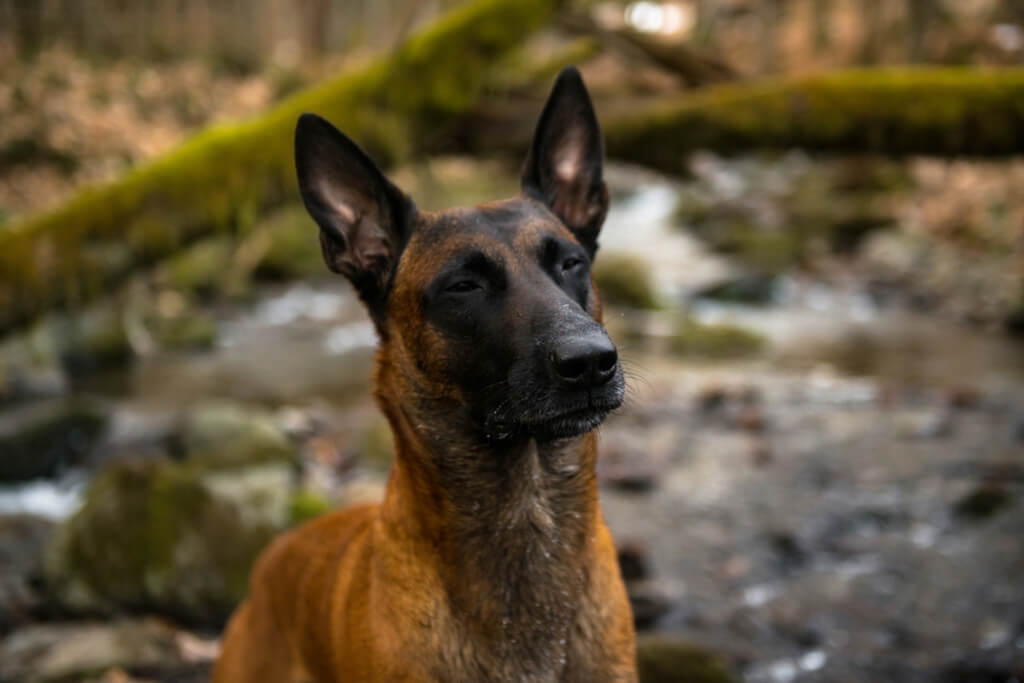
- In the late 1800s, the Belgian Malinois was first developed by breeders who wanted a dog breed that was both strong and agile.
- This breed is one of four Belgian Shepherd breeds, which also include the Belgian Tervuren, Belgian Groenendael, and Laekenois.
- There are many similarities between the Belgian Malinois and German Shepherd dog breeds
- Yes, they’re from Belgium and got their name after the Belgian city of Malines.
- Malinois first arrived in America in the early 1900s but became famous after the 1960s.
- Today, Belgian Malinois is one of the most popular dog breeds in the United States.
- These canines were also recognized as a separate breed by the American Kennel Club in 1959.
Belgian Malinois are part of Navy SEAL teams, including the one that killed Osama bin Laden in 2011.
Appearance (Size and Height)
- When it comes to the appearance of Belgian Malinois, many people confuse them with German Shepherds.
- The main reason behind this is that both breeds are medium-sized and have similar physiques. However, if you look at the comparison of the Belgian Malinois vs German Shepherd, you’ll know there are many differences as well.
- Belgian Malinois are medium to large dogs with a muscular build and a lean profile.
- These canines have dark chocolate eyes and a bushy tail, making them extremely cute and attractive.
- However, the most noticeable and unique feature of this breed is their pointed and triangular ears.
- On average, male Malinois are about 24 to 26 inches tall at the shoulder and weigh 60 to 80 pounds, and females are 22 to 24 inches tall and weigh around 40 to 60 pounds.
How big do Belgian Malinois get?
Here is the size chart of the full grown Belgian Malinois:
| Age | Weight Range | Height Range |
|---|---|---|
| 3 months | 20–28 pounds | 8–12 inches |
| 6 months | 40–55 pounds | 15–20 inches |
| 9 months | 50-65 pounds | 18–25 inches |
| 12 months | 60–70 pounds | 22–28 inches |
| 18+ months | 65–75 pounds | 30–35 inches |
Coat Colors
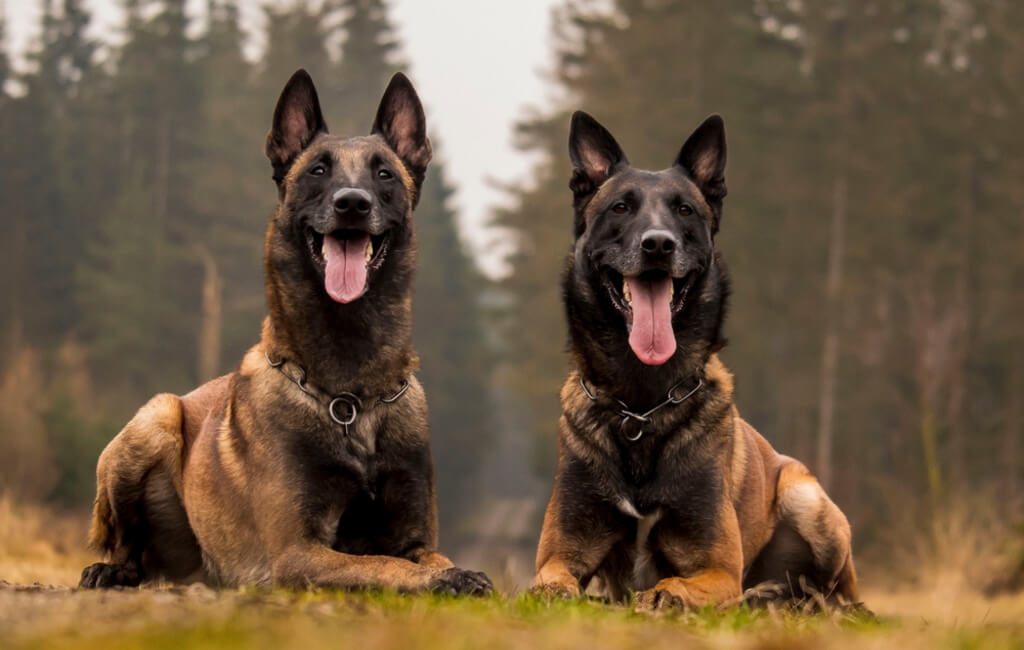
Belgian Malinois has a short and dense coat available in a wide range of colors. The black Belgian Malinois and black and fawn Belgian Malinois are more common, but there are other coat colors available, including:
- Merle
- White
- Black
- Fawn
- Brindle
- Cream
- Cream sable
- Mahogany
- Gray
- Gray sable
- Liver
Here is the list of popular Kennel clubs and coat colors they accept:
| Kennel Club | Acceptable Coat Colors for Belgian Malinois |
|---|---|
| American Kennel Club (AKC) | Fawn, fawn sable, mahogany, red, red sable, black, brindle, cream, cream sable, gray, gray sable, and liver |
| Canadian Kennel Club (CKC) | Any shade of fawn to mahogany, brindle, black, black with tan, blue fawn, gray fawn, and white |
| United Kennel Club (UKC) | Fawn and sable (all the gamut of colors through beige to gray) with charcoaling |
| Federation Cynologique Internationale (FCI) | Fawn with black overlay |
Characteristics and Temperament
- This breed possessed some of the most distinct and unique characteristics, making them stand out among all the other breeds.
- Belgian Malinois are well known for their intelligence, hard work, and playful temperament.
- However, these canines are protective of their family and home. So, early socialization and training are required for Belgian Malinois puppies.
- These canines are good with kids and other pets; however, supervision is required to be on the safe side.
Here is the complete characteristic table of the Belgian Malinois:
| Affection Level | Medium |
| Friendliness | Medium |
| Kid-Friendly | Medium |
| Pet-Friendly | Medium |
| Exercise Needs | High |
| Playfulness | Medium |
| Energy Level | High |
| Trainability | High |
| Intelligence | High |
| Tendency to Bark | Medium |
| Amount of Shedding | Medium |
Health and Nutrition
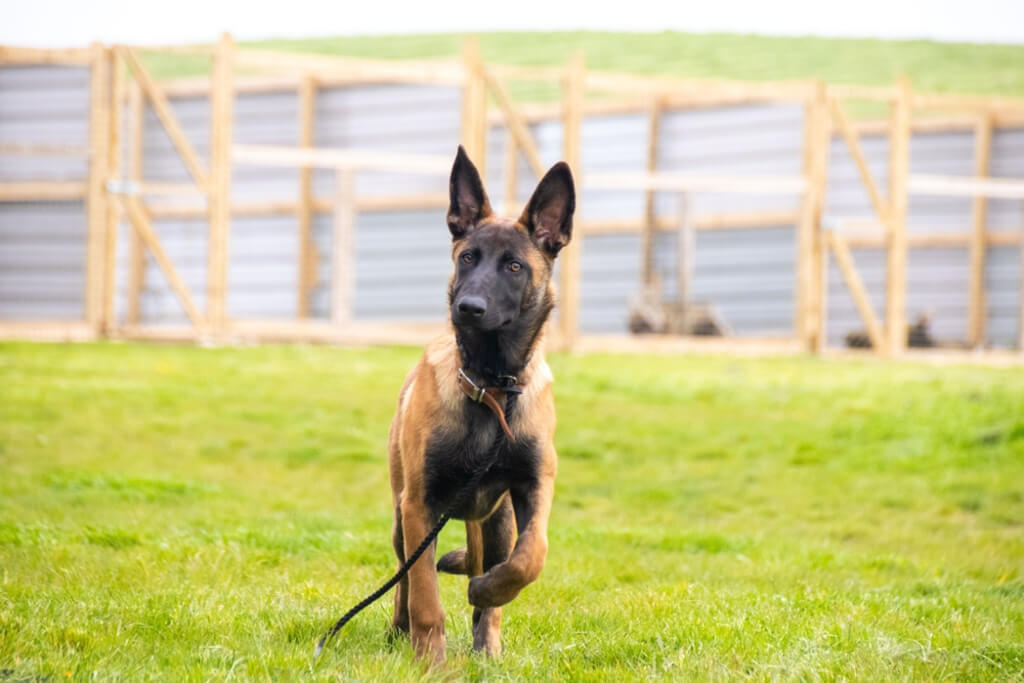
- It’s our responsibility to maintain our beloved Belgian Malinois’s health and well-being.
- And for this, the first and foremost thing you have to do is take care of their diet.
- You should give your pet high-quality dog food with proteins and vitamins in the appropriate amounts.
- On average, you should give at least two meals per day to a Malinois puppy.
- However, this is not fixed, as the food requirements usually depend on factors like age, lifestyle, and health conditions.
- Therefore, it’s always best to consult the vet, as every dog is different and thus requires a specific diet plan that works only for them.
Exercise and Training
How to train a Belgian Malinois?
Apart from providing your pooch with good food in the right amount, it’s also vital to give them regular exercise and training so that your adorable puppy will remain healthy and fit.
- The Belgian Malinois needs at least 1- 2 hours of exercise on a daily basis.
- You can include brisk walks, running, jogging, hiking, and playing fetch.
- You can also go swimming or do other interactive sports activities with your dog, as this breed is considered quite an athlete.
- These physical activities will keep your dog’s body and mind stimulated.
- This is one of the best ways to control anxiety issues and behavior problems in canines.
The Belgian Malinois canines are one of the fastest breeds in the world—they can run up to 30 mph.
NOTE:
Malinois puppies have a habit of running behind vehicles and chasing other moving objects, so it is advised to always keep them on a leash or in a well-fenced area.
Lifespan and Common Health Problems
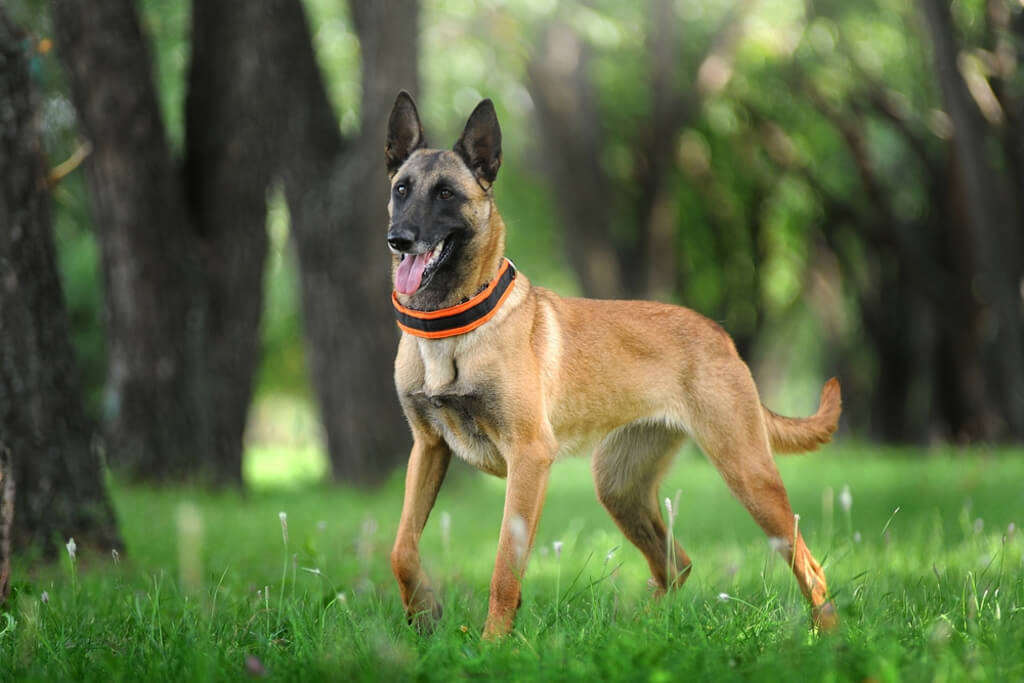
How long do Belgian Malinois live?
The Belgian Malinois lifespan is about 10–14 years.
However, just like other breeds, a Belgian Malinois dog also suffers from a few medical issues, such as:
- Elbow and Hip Dysplasia
- Cataracts
- Hypothyroidism
- Progressive Retinal Atrophy (PRA)
- Pannus
- Epilepsy
- Bloat (Gastric Torsion)
- Hemangiosarcoma.
Grooming Needs
- Fortunately, grooming is easy for this breed, as they shed only twice a year, around fall and spring.
- So, you have to give more attention to this shedding period.
- And apart from this time, all they need is basic grooming and care.
- You have to brush the coat at least 1 to 2 times a week to remove loose fur and prevent matting.
- Also, once in a while, bathe them with a dog-specific shampoo and check for ear infections or wax buildup.
- These simple grooming steps will help you keep your pup’s coat in good condition.
Are Belgian Malinois hypoallergenic?
No, Belgian Malinois are not considered hypoallergenic!
So, if you have allergies or are sensitive to dog hair, Belgian Malinois is not recommended. However, if you’re still determined to get this breed, it’s crucial to take precautions such as using air purifiers and regular cleaning.
Price
How much is a Belgian Malinois?
On average, you can get a Belgian Malinois puppy anywhere from $1500 to $4000 from a reputable breeder. However, the Belgian Malinois price also depends on other factors, such as the dog’s lineage, pedigree, age, and the breeder’s reputation.
If you want a dog at a lower price, you can search ‘Belgian Malinois for sale near me’ on Google, and you’ll get several search results of breeders in your local area offering this breed at an affordable price. You can also adopt a puppy from a rescue center or a local shelter.
FAQs
Belgian Malinois are friendly, obedient, and easy to train, making them good family dogs. However, sometimes they become aggressive and protective of their family towards strangers. This is why early socialization and training are crucial for Belgian Malinois.
The Belgian Malinois is one of the most popular dog breeders in the United States. Also, this breed is rare, and only some breeders can produce these puppies. Additionally, they’re suitable for various roles, like police and military work. All these factors drive up the price of puppies.
There are so many great things about Belgian Malinois, including their intelligence, playfulness, and protective nature. These canines are extremely loyal and hardworking. Malinois aren’t only popular as family dogs but also as service dogs and watchdogs. However, they need early training and are only suitable for experienced pet owners.
Get a cute Belgian Malinois puppy!
Having a dog in a family is a blessing, and when you have an energetic and loyal dog like a Belgian Malinois, your life will be filled with adventure and excitement. This wonderful family dog needs regular exercise, training, and lots of love.
This breed is ideal for individuals or families who can give them appropriate time, handle their highly active nature, and take care of them with their whole heart. After reading this blog, you will surely know the Belgian Malinois breed in more detail and whether they’re good for you or not.
Explore Further










